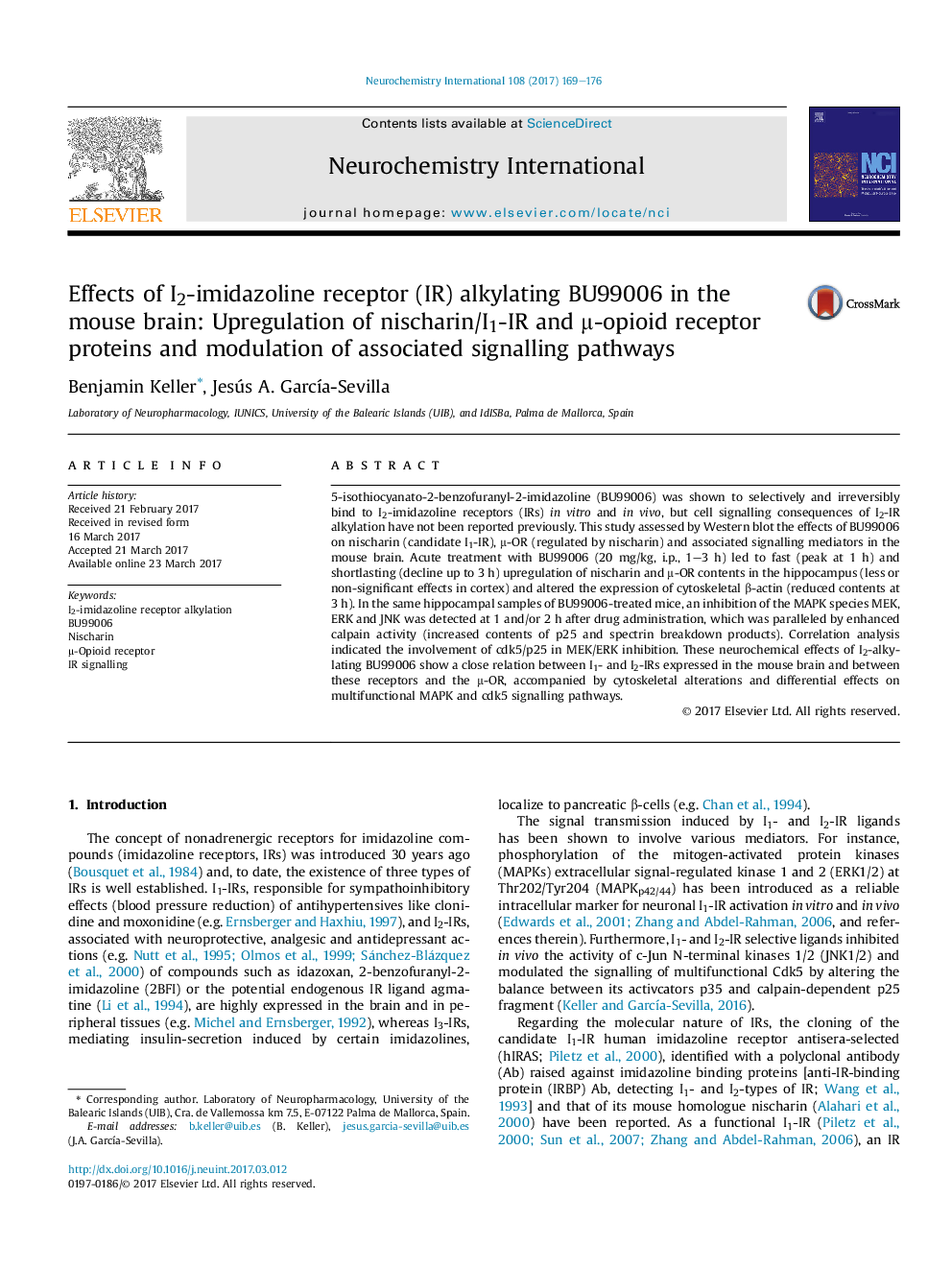| Article ID | Journal | Published Year | Pages | File Type |
|---|---|---|---|---|
| 5534710 | Neurochemistry International | 2017 | 8 Pages |
â¢Increased nischarin/I1-IR and μ-OR contents after I2-IR-alkylating BU99006 in mice.â¢Inhibition of MAPK signalling and increased calpain activity after BU99006.â¢Upregulation of cdk5 activator p25 indicated increased/aberrant kinase activation.â¢BU99006 induced alterations of the actin cytoskeleton.
5-isothiocyanato-2-benzofuranyl-2-imidazoline (BU99006) was shown to selectively and irreversibly bind to I2-imidazoline receptors (IRs) in vitro and in vivo, but cell signalling consequences of I2-IR alkylation have not been reported previously. This study assessed by Western blot the effects of BU99006 on nischarin (candidate I1-IR), μ-OR (regulated by nischarin) and associated signalling mediators in the mouse brain. Acute treatment with BU99006 (20 mg/kg, i.p., 1-3 h) led to fast (peak at 1 h) and shortlasting (decline up to 3 h) upregulation of nischarin and μ-OR contents in the hippocampus (less or non-significant effects in cortex) and altered the expression of cytoskeletal β-actin (reduced contents at 3 h). In the same hippocampal samples of BU99006-treated mice, an inhibition of the MAPK species MEK, ERK and JNK was detected at 1 and/or 2 h after drug administration, which was paralleled by enhanced calpain activity (increased contents of p25 and spectrin breakdown products). Correlation analysis indicated the involvement of cdk5/p25 in MEK/ERK inhibition. These neurochemical effects of I2-alkylating BU99006 show a close relation between I1- and I2-IRs expressed in the mouse brain and between these receptors and the μ-OR, accompanied by cytoskeletal alterations and differential effects on multifunctional MAPK and cdk5 signalling pathways.
